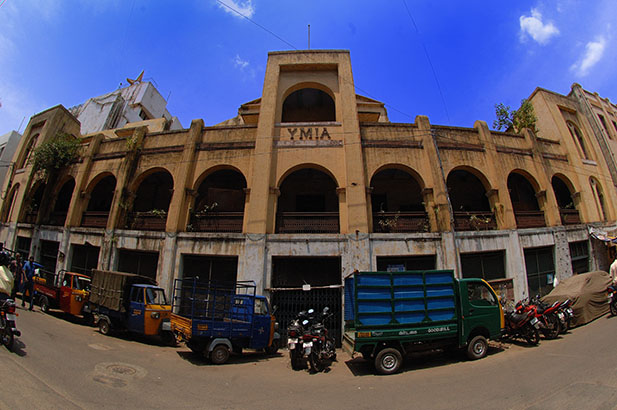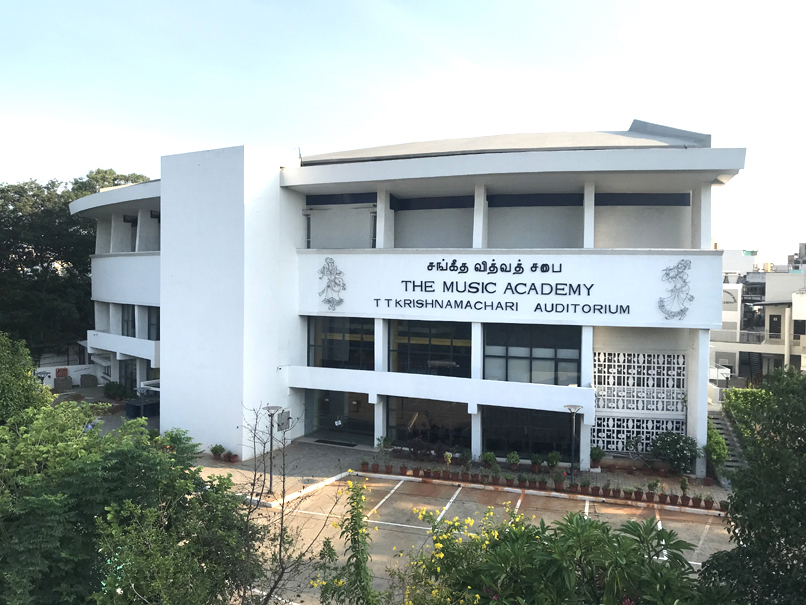Registered with the Registrar of Newspapers for India under R.N.I 53640/91
Vol. XXXII No. 16, December 1-15, 2022
Heritage Watch: Whither the Music Season?
The 96th edition of the city’s famed December Music Season has just begun. No matter how miniscule the numbers the very fact that a cultural festival dedicated to the classical arts has survived over so many years entirely on private initiative is something to marvel about. This year the music festival will go back to its time-tested and pre-Covid format – of performances to live audiences. The big question is about the public returning to the venues.
Over the past two years, the art form tried to go online, with recorded concerts being streamed directly into homes. Reactions were mixed – the first year saw an enthusiastic response while the second witnessed flagging interest owing to screen time fatigue and also the phased opening up of the outside world. But the streaming of music and dance performances was a boon to those with mobility issues.


What was not such a welcoming feature was a growing expectation among certain sections of the audience of free offerings online as a matter of right. It became almost customary for many to demand uploads of performances on YouTube with no regard to the expenses that organisers incurred for ensuring this. The reluctance to pay to view, always a bane in Indian classical arts, was stronger than ever. It is against this background that the music festival opens once again. Time alone will tell as to whether it will survive and grow in the future.
Our OLD, by V Ganesan, features Gokhale Hall on Armenian Street, which in the pre-December Music Season days was a preferred venue for concerts. Our NEW is the Music Academy, whose iconic venue turns 60 this year.


CARE FOR CARNATIC MUSIC
The month of December marks the busy carnatic music season in major cities of India. Chennai tops the list with many sabhas in organising kutchery and encouraging artists during this time. In Mumbai Shanmukhananda Fine Arts and Music did bring artists from Chennai and encouraged them with a top slot given to them mostly during weekends.
Just like Shanmukhananda Auditorium in Sion giving prime spot M.S. Subbulakshmi, Asian College of Journalism inaugurated its state of the art auditorium in the name of music maestro. The proximity of the annual music festival season provides an occasion for stock-taking. The Carnatic music scene today presents indeed a striking contrast to what was obtained over three years ago before the advent of the many chamber music circles in the City that have now happily come to stay. It was then positively depressing with the big sabhas going in largely for drama and dance arid giving a very low priority to music concerts. And the concert engagements that they did provide were restricted to a few top artistes only leaving the majority of musicians in despair.
There was a time when Madras (now Chennai) audiences listened to music and theatrical performances in environments that depended entirely on natural amplification. That did place challenges on artistes, especially the men, who sang and spoke at artificially high pitches and in loud volume, after at enormous cost to health. Now the technology has developed in such a way there are modern musical systems available to hear your favorite artist. Such locales demanded audience discipline too with complete silence if both dialogues and music had to be heard without disturbance. The audience at the Shanmukhananda Auditorium is a striking example as they are knowledgeable and have the patience and perseverance to acknowledge and appreciate quality music. Artist coming from far off places did appreciate the manner in which the audience behaved in the metro city of Mumbai.
The musical extravaganza during Margazhi month is worth listening to. People take cover for attending the carnatic music as the outside atmosphere is chill enough and the air conditioned auditorium compels the audience to wear a sweater and ladies used to bring shawls to enjoy the music without feeling cold. The musical system and the arrangements made for each and every artist help to benefit those with weak voices also. What started off as a single mic before the main artist soon proliferated into separate mics for each performer on stage resulting in considerable distortion and the need for utmost co-ordination.
Go to the average Carnatic music performance today and the first thing that will strike you on curtains going up in a systematic way and the artiste on stage gesticulating to the person at the controls of the music system to raise the volume of the mic that is closest to to him or her as the case may be. The present music system is the best in business.
Today too, there are numerous rasikas who constantly bemoan the passing away of the big stars of yesteryear’s and point out to the surviving members of this stellar group as the only musicians capable of the “grand” kutcheri and of holding the sustained attention of the large audience. This sentimental attachment to the past is moving and understandable. But it also blurs an objective and fair assessment of the present.
In an otherwise excellently designed facility, two major defects demand immediate attention and one is few toilets and a non-linear seating arrangement in some rows that may make it difficult for a smooth evacuation in the event of fire. Two major fires in Uphaar Theatre in Delhi and the Shanmukhananda Hall in Mumbai raise the need for fire safety measures and a safe fire exit to clear off from major fire affected areas.
It is a happy development of the present times that the chamber musician is coming into his own. There are quite a number of class musicians with the requisite refinement and taste for success as chamber artistes. While they may not be as successful in the big hail Kutcheri, the big star is also known to find it difficult to produce the serene music that chaste chamber art demands. It is time to have more care for Carnatic music and the audience should develop a taste to appreciate the essence of music in the best way possible.